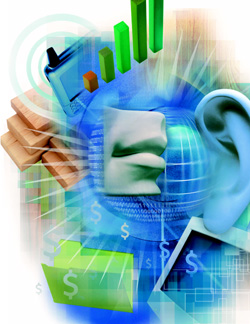Order delivery tracking is on many dealers’ radar screens. Ellefson says Home Lumber is in the midst of a “big project” to be able to track an order wherever it happens to be, so “customers can check in and get answers much quicker.” Boland Maloney and Strober are using delivery and dispatch systems supplied by DQ Technologies, which Koontz says provides his company with “multiple levels of recognition” in terms of knowing where a product is at a given moment. The one drawback of this system, which Koontz says is being ironed out, is that it can’t interface with drivers’ phone cameras (which they use to photograph their freight), and can’t yet provide e-mail alerts when the job is dropped.
Moving Forward The big question that pro dealers are sorting out now is how sophisticated they want their operations to become, and at what cost.
Strober, for example, is interested in finding software that can upgrade its design capabilities for trusses, panels, windows, and kitchen cabinets. And Klyman says Strober is learning new tricks about data warehousing from its sister company, Lanoga Corp. He notes that parent company Pro-Build Holdings’ far-flung operations still use three different ledger systems, but that doesn’t worry him. “It’s less important to be on the same operating system, company to company, than to have a broad overview of what you’re doing.”
Ellefson of Home Lumber says the “real potential” of technology lies in using software “that creates processes of communication so you understand how each other’s business works, and you can expand your relationships.” But making that connection doesn’t necessarily mean that dealers are hopped up about making significant changes (or investments) in new systems to run their operations. Many dealers still are content with tried-and-true “green screen,” or text-only, technology, which in Home’s case works in tandem with graphic-user interface (GUI) systems like Windows.
The same is true of Ellsworth, Maine–based Ellsworth Building Supply, which uses an ERP system called Lumbercore that it first developed 25 years ago and co-owns with six other lumber dealers. Chuck Carter, Ellsworth’s IT manager, says his company is migrating to GUI technology because its younger employees “look at a green screen and can’t understand it.” That migration was on Carter’s short list of tech goals this year, as well as document storage and expanding wireless technology to its drive-through lumber-yards so that a contractor could load products with a salesperson who would use a tablet PC to write up the order.
Builders FirstSource has been exposed to 22 different ERP systems as it has expanded through acquisition, and has boiled down what it uses to two: Activant’s Gemini and a heavily modified version of a system that originally came from On-Line Computing and which BFS first used in its Atlantic region. Builders FirstSource uses Windows XP as its operating platform, but some of its back-office functions are still in the green-screen world, which McDonald says “works just fine. It’s not so much the technology as the processes to help our people do the best jobs they can, and the way we can record and account for everything.”
McDonald notes that just keeping Builders FirstSource where it is right now, technologically, “takes a lot of effort and money.” But he says he knows a system or software is past its prime when “our training and maintenance budgets start going up.” —John Caulfield is a contributing editor for PROSALES.

